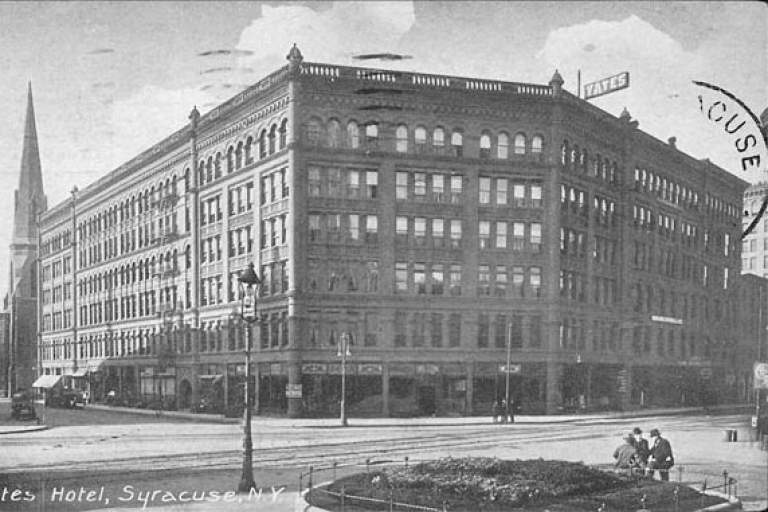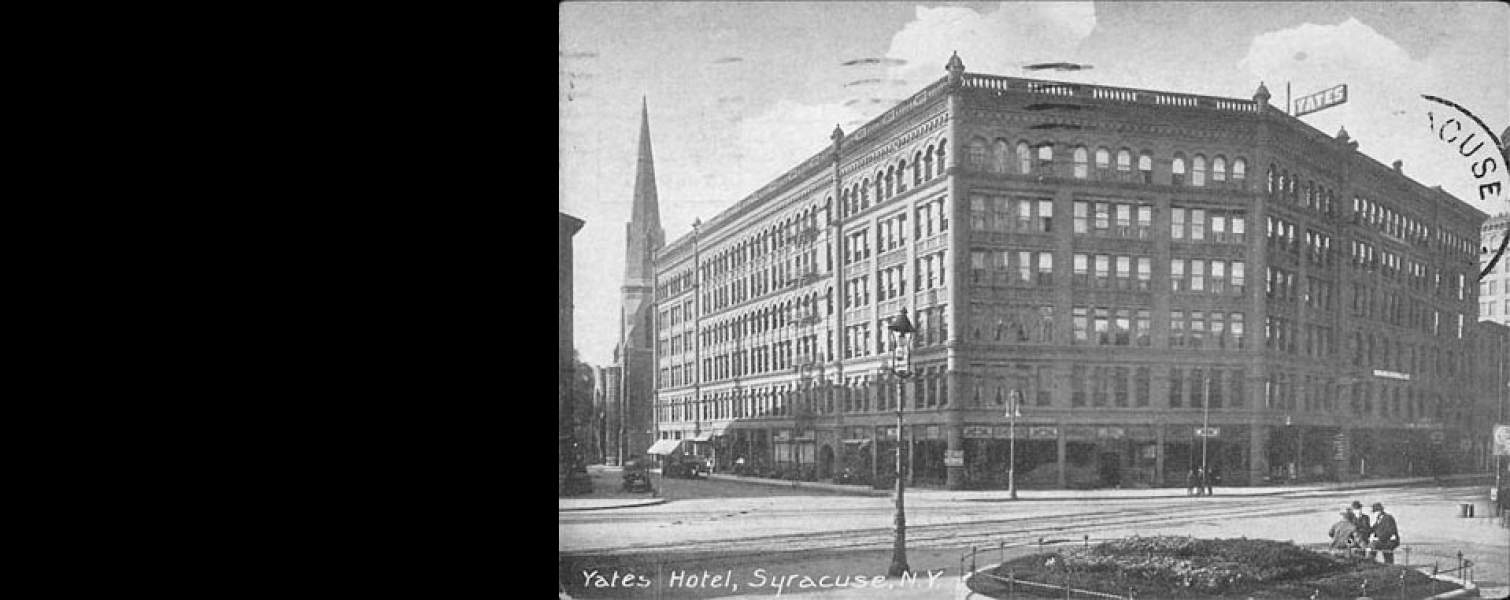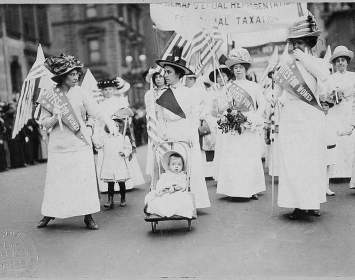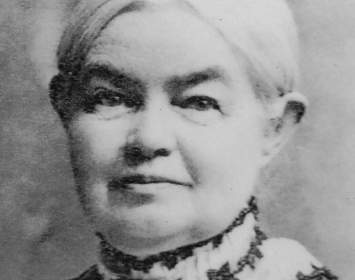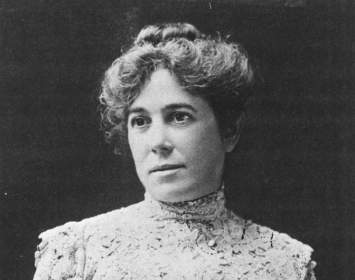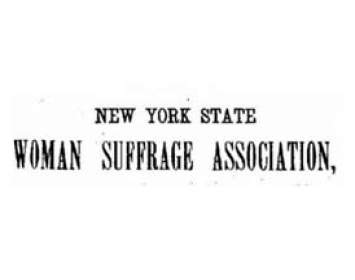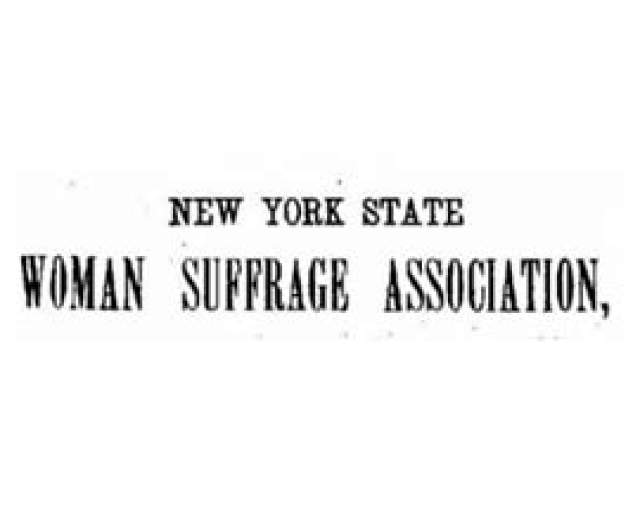The thirty-eighth annual convention of the New York State Woman Suffrage Association (NYSWSA) was held in Syracuse on Tuesday through Friday, October 16–19, 1906. The Yates Hotel was the convention's headquarters. Plenary sessions were held at the May Memorial Church at 472 James Street.
For the first time, a NYSWSA convention would proceed without the towering presence of Susan B. Anthony, who had died on March 13, 1906.
Events of the Convention. The convention began at 11:00 a.m. on Tuesday, October 16, with a nonpublic Executive Meeting at the Yates Hotel.
Delegates convened at May Church for the first plenary session at 2:00 p.m., with NYSWSA president Ella Hawley Crossett of Warsaw, New York, presiding.
Even by the standards of NYSWSA conventions, this one had a most impressive lineup of speakers (in alphabetical order):
- Prominent suffragist and radical Rachel Foster Avery (1858–1919);
- Teacher and National American Woman Suffrage Association officer Mary Elizabeth Whitbeck Craigie of Buffalo (1853–1928);
- Sherwood activist and donor Emily Howland (1827–1929);
- Attorney and suffragist Julie Regula Jenney (1866–1947);
- Regional suffrage activist Harriet May Mills (1857–1936);
- Auburn suffrage campaigner and donor Eliza Wright Osborne (1829–1911);
- Physician, minister, and suffragist Anna Howard Shaw (1847–1919);
- Suffrage campaigner and pacifist Fanny Garrison Villard (1844–1928), and others.
The Syracuse Political Equality Club, a local suffragist organization, hosted a reception for all delegates at the Yates from 8:00 to 10:00 p.m. that evening.
The plenary sessions of Wednesday, October 17, and Thursday, October 18, occurred at May Church.
From 4:30 to 6:00 p.m. on Thursday, a reception was held for delegates, officers, and speakers at the home of Mrs. C. D. Mills and her daughter, NYSWSA officer Harriet May Mills. (C. D. B. Mills, an abolition and freethought activist and Harriet's father, had died in 1900.)
Public plenary sessions continued at May Church on Thursday evening and a brief concluding session in the morning of Friday, October 19.
NYSWSA's thirty-eighth annual convention closed with an 11:00 a m. Executive Meeting at the Yates Hotel.
The Building and Site. The Yates Hotel was designed in the Romanesque Revival style by the Syracuse architect Archimedes Russell. It opened on September 17, 1892, across the street from City Hall. Its opening reception was attended by some 4,000 people. And no wonder, because the Yates exemplified everything new and grand in American hotel design. Six stories tall, it covered most of a city block and boasted 250 rooms. Reflecting the emerging popularity of cocktails, the hotel's saloon was elaborately decorated with a large marble bar.
Apparently, the Yates's design had been too ambitious. By the time of the 1906 convention, the property had been divided into multiple hotels: the Vanderbilt House, the Hotel Manhattan, and a diminished Yates Hotel, which retained the Montgomery Street face of the building.
The Yates operated continuously for almost eight decades, closing in March 1971. It was demolished a few months later. Its site is now a parking lot. At some point, a section of Genesee Street that defined one side of the hotel's property was removed, creating a single larger block bounded by East Washington, Montgomery, East Fayette, and State Streets. That block was also the site of the Grand Opera House (demolished 1925); it now contains the Hills Building (erected 1928) and a large expanse of parking, some of it on the footprint of the Yates Hotel.
Thanks to Timothy Binga for research assistance.
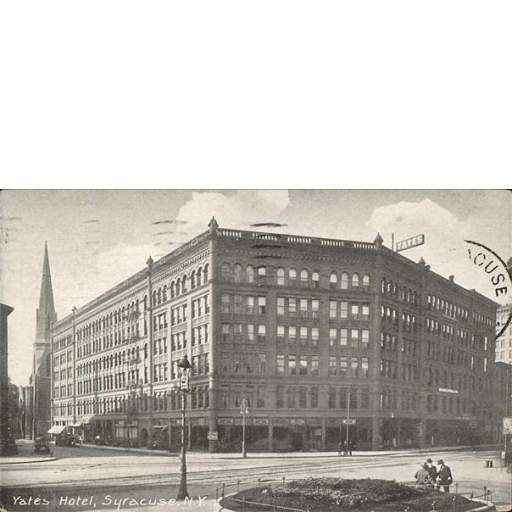
Yates Hotel
Earliest known photograph of the Yates Hotel (from a postcard).
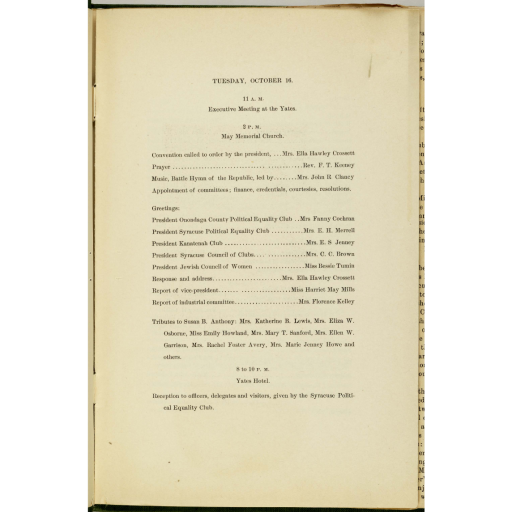
1906 NYSWSA Conference Program, page 3
This page from the program of the 1906 New York State Woman Suffrage Meeting gives the schedule for the Convention's opening day, which began with an Executive Meeting and closed with a reception at the Yates Hotel.
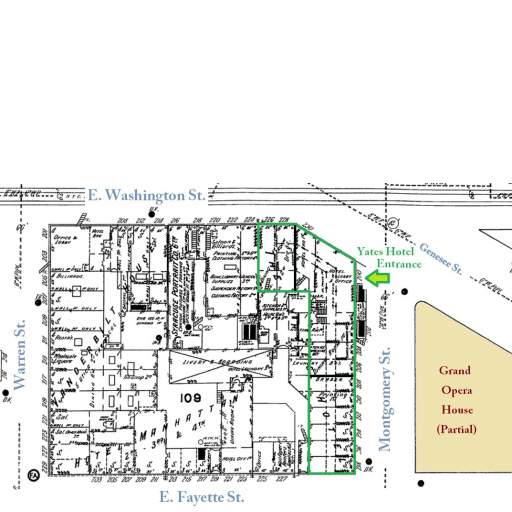
Yates Hotel Footprint
When first built circa 1892, the Yates Hotel occupied the entire block bounded by East Washington Street, Genesee Street, Montgomery Street, and East Fayette Street. Apparently this was too ambitious to be sustained. By the time of the 1906 NYSWSA convention, the block had been divided into multiple hotels: the Vanderbilt House, the Hotel Manhattan, and the diminished Yates Hotel, which retained the entire Montgomery Street face of the building. The Yates's ground-floor footprint is outlined in green above. The hotel was directly across Montgomery Street from the Grand Opera House (shaded at right), site of a lecture by Robert Green Ingersoll and a production of a musical by L. Frank Baum. The portion of Genesee Street shown proceeding diagonally at upper right no longer exists; both blocks shown now extend north all the way to East Washington Street.
Thanks to Timothy Binga for research assistance.
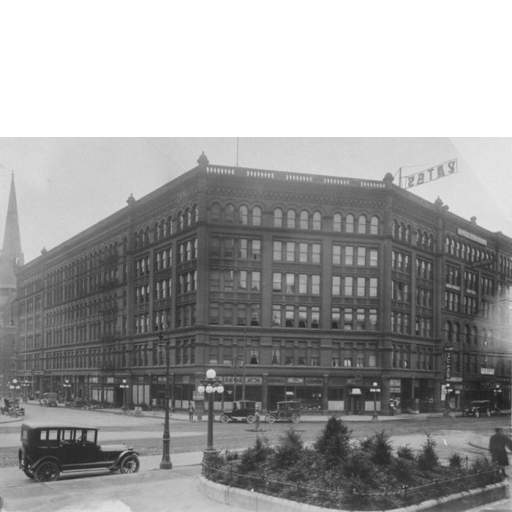
Yates Hotel, 1920s
This later image features several automobiles. Note also how the floral plantings (in foreground in the previous image) have been supplanted by shrubbery.
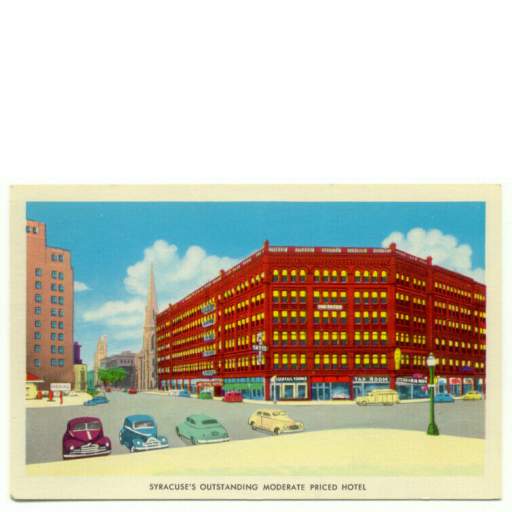
Decline Begins
Judging by the vehicles, this gaudy color postcard dates from the late 1930s. Even then, the Yates—once Syracuse's grandest hotel—is now described as "moderate priced."
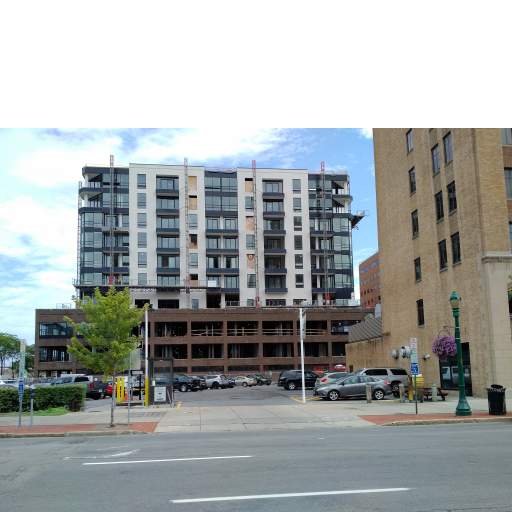
Yates Hotel Site Today
The site of the Yates Hotel viewed across Montgomery Street. At left is the City Hall Parking Lot; at right is the Hills Building, a twelve-story office tower erected in 1928.
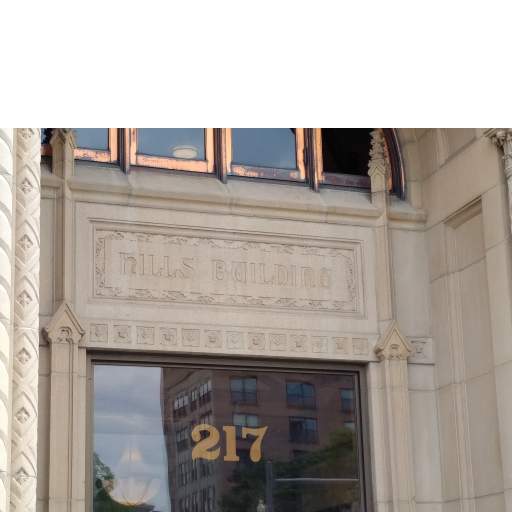
Hills Building Entryway
Ornate carved entryway tablet of the Hills Building, which is adjacent to the Grand Opera House site.
Associated Causes
Associated Historical Events
Thirty-Eighth NY State Suffrage Convention
October 16–19, 1906
